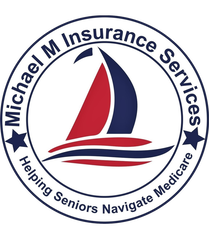When you first enrolled in a Medicare Supplement (Medigap) plan, you probably based your
choice on a mix of cost, coverage, and peace of mind. But as the years go by, it’s worth asking:
How much are you actually using your coverage — and is it still the right fit for you?
The answer can vary widely from person to person. Some people visit the doctor often and need
frequent tests. Others barely use their insurance at all. Both situations can influence whether
you keep your current plan or consider a different option.
Let’s look at how plan utilization — the way you use your health plan — plays into making the
best decision for your needs.
1. The "Frequent Flyer" Scenario — High Utilization
If you have ongoing health conditions, you may see multiple doctors each year and need
diagnostic tests or treatments. In this case, the value of your Medicare Supplement may be
clear.
Typical high-utilization patterns might include:
- Primary Care Visits – 3–6+ visits per year for check-ups, follow-ups, and medicationmanagement.
- Specialist Visits – Cardiologists, urologists, orthopedists, or others, sometimes 6–10visits a year combined.
- Diagnostic Imaging – MRIs, CT scans, ultrasounds, and X-rays for ongoing conditions.
- Outpatient Procedures – Such as cataract surgery, colonoscopies, or minor surgeries.
- Cancer Treatments – Chemotherapy, radiation, or infusion therapies, which can be extremely costly without strong coverage.
Why it matters:
If you’re in this group, your plan is doing a lot of heavy lifting. Switching to a lower-premium but
higher-out-of-pocket plan might save money monthly but could cost much more overall if your
care needs stay high or increase.
2. The "Healthy and Hardly Using It" Scenario — Low Utilization
On the other end of the spectrum are Medicare beneficiaries who rarely see a doctor and have
few (if any) ongoing prescriptions.
Typical low-utilization patterns might include:
- 1 annual wellness visit to your primary care doctor.
- A specialist visit only every couple of years (if at all).
- Few or no lab tests, scans, or procedures.
- No hospital stays for years.
Why it matters:
If you’re paying for one of the most comprehensive Medicare Supplement plans but rarely use
it, you might be spending more than you need to. This doesn’t mean you should rush to change
— health status can change quickly — but it’s worth evaluating whether a lower-cost
Supplement (or even a High Deductible option) might make sense while you’re in good health.
3. The Middle Ground — Average Utilization
Most people fall somewhere between the two extremes. They use their coverage a few times a
year for routine care and the occasional specialist visit, with the possibility of an unexpected
event or procedure.
Typical average-utilization patterns might include:
- 2–3 primary care visits per year.
- 2–4 specialist visits.
- A scan or imaging test every year or two.
- Occasional outpatient procedures.
Why it matters:
For many in this group, the decision to keep or change plans comes down to balancing peace
of mind with cost savings . You want a plan that protects you from big surprises without paying
more than necessary for routine care.
4. Thinking Ahead: Your Future Utilization
Your current usage is only part of the picture. It’s also worth thinking about what might change
over the next 5–10 years:
- New Diagnoses – Even healthy people can develop chronic conditions like heart disease, arthritis, or diabetes as they age.
- Increased Imaging & Testing – MRIs, CT scans, and ultrasounds often become more common with age.
- Potential Surgeries – Knee replacements, cataract surgeries, or other planned procedures.
- Cancer Treatment – Even with no current diagnosis, having strong coverage in place before you need it is critical.
Planning ahead means considering not just what you need now, but what you might need later.
5. Making the Most of Your Medicare Supplement
Whether you’re a high, low, or average utilizer, here are some steps to help you make an
informed decision:
- Review Your Medical Visits & Bills – Look back at the past 12–24 months. How manytimes did you see a doctor, get a test, or have a procedure?
- Estimate Future Needs – Consider upcoming appointments, scheduled procedures, orpossible new treatments.
- Compare Costs – Weigh your current premium against what you’d pay in a different Medicare Supplement plan, factoring in deductibles and copays.
- Consider Risk Tolerance – If an unexpected hospital stay would cause financial stress,a more comprehensive plan may be worth the higher premium.
- Re-evaluate Regularly – Your health and your needs can change. Reassessing everyyear ensures your plan keeps up with your life.
Bottom Line
Your Medicare Supplement plan is a safety net — but the size and cost of that net should fit
your needs. By taking an honest look at how much you’re using your coverage now and how
that might change in the future, you can make a choice that balances peace of mind with
smart spending .
Whether that means keeping your current plan, switching to a different Supplement, or exploring
other options, the key is to stay informed and proactive .

